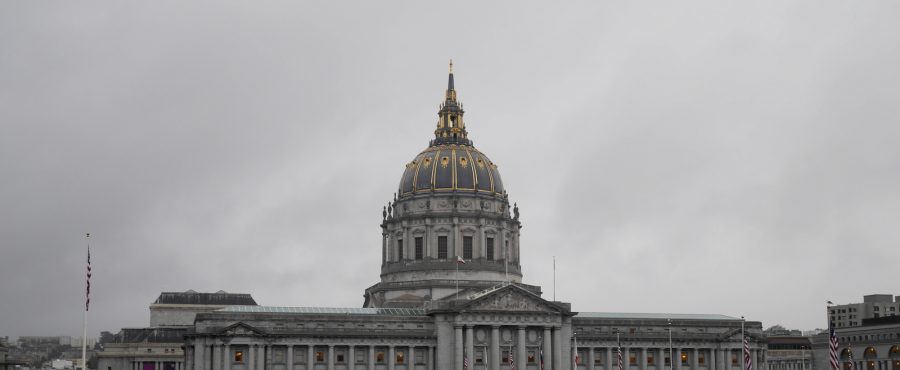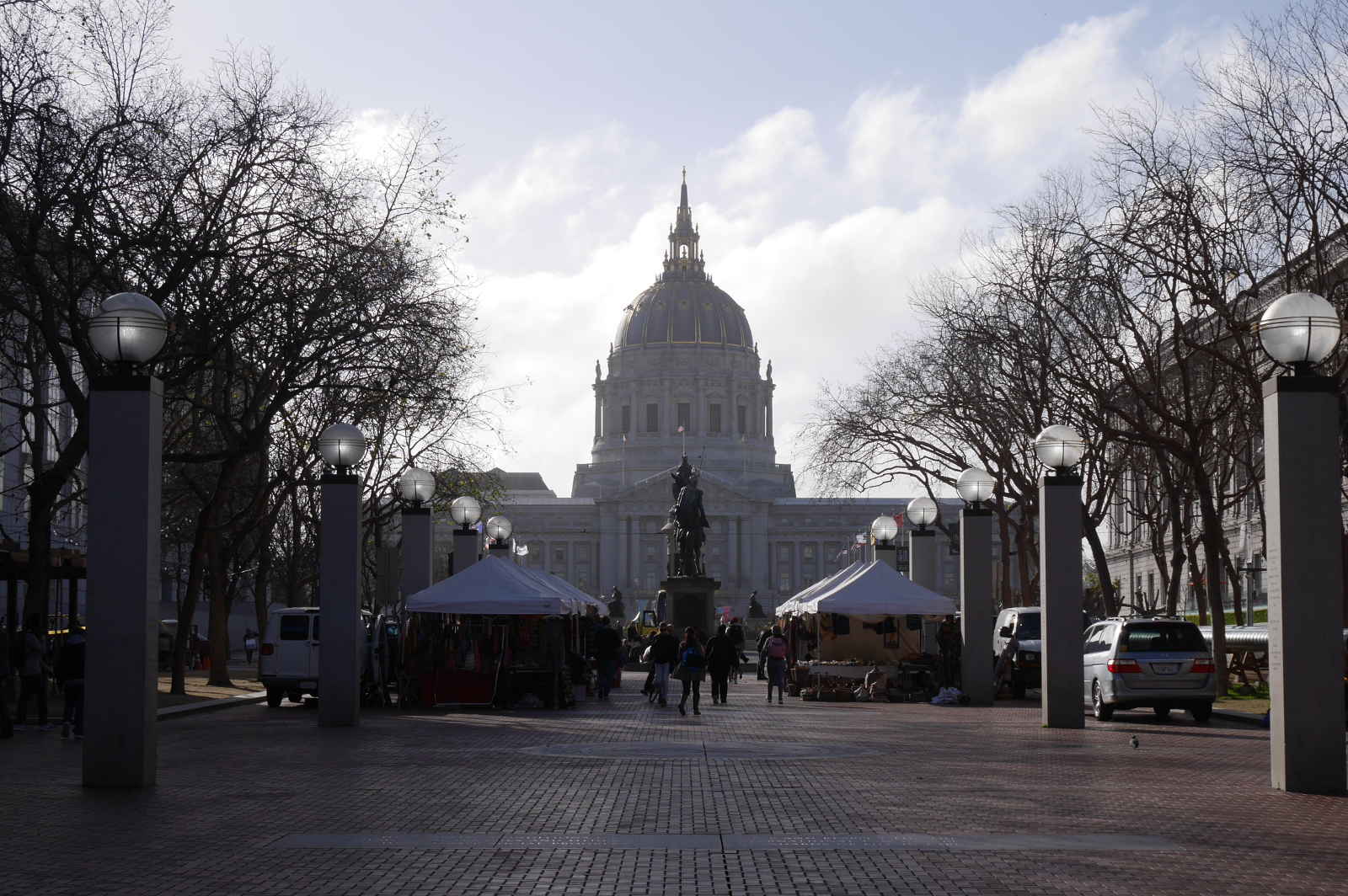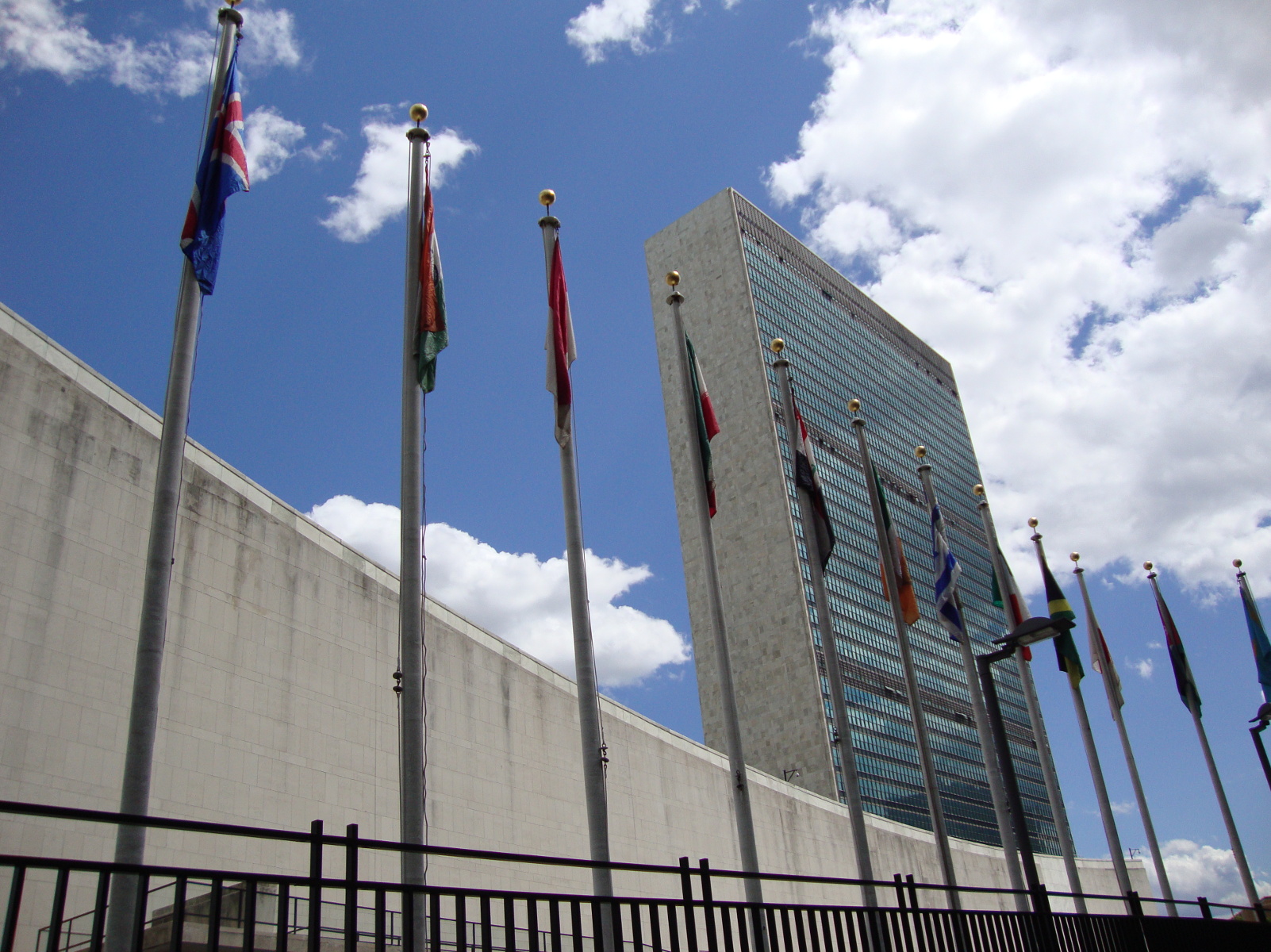Just to the east of San Francisco’s grand Civic Center, UN Plaza is an unassuming pedestrian mall that hosts farmers’ markets and handicrafts fairs. Were it not for the name of the nearby BART (San Francisco metro) station, Civic Center/UN Plaza, it would be easy to miss UN Plaza among the grander spaces and buildings nearby—Civic Center, City Hall with its gold-trimmed dome, the Asian Art Museum, and the San Francisco Public Library. On either side of UN Plaza, behind the tents of the farmers’ markets, granite pillars are inscribed with the names of all member states of the United Nations, organized by the date of their entry into this global community.
UN Plaza is located here because it is where the United Nations was founded. With the ratification of the UN Charter in the War Memorial Veterans Building just west of City Hall, the UN came into existence on October 24, 1945 — seventy-two years ago today.
The first pillars in UN Plaza include the names of all fifty-one founding members of the United Nations. The names of the founding members include many names that one would expect to see on the list: Australia, Canada, Denmark, United States, USSR. But there is one name that doesn’t quite seem to fit: India.
How could India have been a founding member of the United Nations in 1945 if wasn’t even its own country yet? India would be a colony of the British Empire for another two years. How could a colony join a community of sovereign states?
The answer lies in the relations forged between India and the United States in World War II.
In March 1941, the US Congress passed the Lend-Lease bill after prolonged debate, enabling the United States to ship supposedly surplus arms to the embattled British Empire, which had been at war with Germany since 1939. At this point, the United States was still officially neutral—and would be until Pearl Harbor nine months later—but the Nazis’ blitzkrieg across Europe had led many American leaders to rethink their traditional stance of isolationism. American industry started to retool for arms production. (Much of the lend-lease aid was actually newly-produced, not surplus.)
As part of the British Empire, India qualified for lend-lease aid. The colony would serve as a staging-ground for the Allied war effort in the China-Burma-India theater. To coordinate aid shipments, the colonial Government of India set up a front office in New York, the India Purchasing Mission, in July 1941. It was the first official, government-to-government link between India and the United States. In 1942, the office was moved to Washington, DC and renamed India Supply Mission (ISM). Throughout the war, ISM coordinated aid from the United States and Canada to India.
When it came time for the United Nations Conference just after the war, India Supply Mission served as the official representative of India in San Francisco. The delegates from ISM would be colonial subjects for a little while longer, but they represented their country in the community of sovereign states.1
India Supply Mission continued to exist after the Indian Embassy was set up in Washington in 1946. After independence, ISM coordinated a different type of aid: development aid. From their office at 2342 Massachusetts Avenue NW, the bureaucrats of India Supply Mission saw to it that their country received the parts, equipment, and loan payments that industrialization demanded.
- India had earlier signed the “Declaration by the United Nations,” on January 1, 1942. During the war, the name “United Nations” referred to the Allied powers. After the San Francisco conference, the name acquired its modern meaning. [↩]



